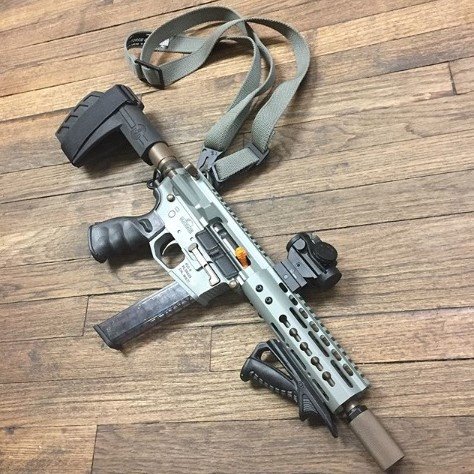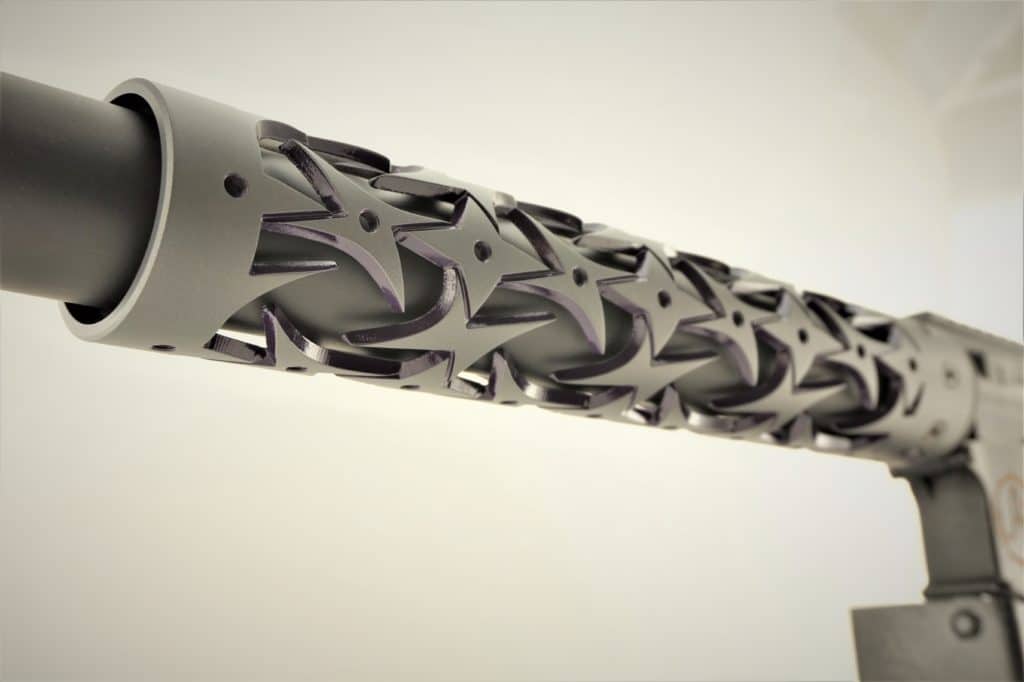Cerakote, Duracoat, GunKote, … the list goes on. With so many options on the market, which coating should you choose to finish your build? What are the pros and cons of each? Why do some people like one more than the other? This piece includes everything you need to know.

From Cerakote itself, “Cerakote is not a paint. Cerakote is a Polymer-Ceramic coating that can be applied to metals, plastics, polymers and wood.” Cerakote offers a few series, but the most popular are the H-Series (oven cure) and the C-Series/High Temp Firearm (air cure). The H-Series is a two-part coating, consisting of hardener and “paint”, and it is the most durable of the standard Cerakote products. The H-Series can withstand 500 degrees F and is available in dozens of colors. After a part has been baked in the oven and cooled to touch, it is cured. The C-Series is a one-part coating that can withstand 2,000 degrees F, and is fully cured after 5 days. The C-Series is primarily used on parts like barrels, muzzle brakes, and optics. Cerakote is very resistant to heat, scratching, chemical, and UV damage. Optimal thickness for Cerakote is 0.0005” – 0.001.
Pros:
- Proven durability
- Lots of color options (colors can even be mixed)
- quick cure-time (H-Series)
Cons:
- must have access to spray gun, oven (for H-Series), blaster
- more expensive than other coatings
- 2 part coating isn’t reusable after mixed

Duracoat is a two-part chemical coating that can be applied to metal, plastic, and wood. It is available in over 300 colors, and was one of the first firearm coatings available. Duracoat is available in liquid (for spray equipment) and aerosol cans (for at-home use) and is air-cured, optimal thickness is 0.001″ – .008. Parts coated with Duracoat are dry to the touch in 20 minutes, can be handled after 1 hour, and are usable after 24 hours. However, it takes 2-3 weeks for parts to completely cure (hardness, elasticity, and chemical resistance). Standard Duracoat can withstand temps up to 500-600 degrees F, and Duracoat’s DuraHeat™2.0 can withstand temps up to 1,500 degrees F. Blasting parts isn’t necessary, but it does give Duracoat a better foundation.
Pros:
- wide variety of colors
- can be applied at home
Cons:
- 2-3 weeks for a complete cure
- thicker than Cerakote

GunKote is the biggest competition for Cerakote; each have their own following for being “the best” firearm coating, and both are comparable when tested against corrosion, chemicals, and durability. KG Gunkote also has two series, the 2400 Series (Oven Cure), and the 1200 Air Cure Series.
The standard KG Gunkote is the 2400 Series, which “offers impact resistance, lubrication, heat dissipation, corrosion resistance, scratch resistance, and durability”. This series is a one-part mix (unlike Cerakote), that will flex up to a 180 degree bend, and can be used in dip/spin and spray applications. GunKote doesn’t have to be pre-heated for application, unless a different finish is desired. Optimal thickness is .0003″ – .0004. Cure-time is approximately 1 hour.
The 1200 Air Cure series is a single part coating that “will produce a hard, but flexible coating with a cure time of only 80 minutes at an ambient temperature of 70 degrees F.” It is ideal for parts that cannot be baked at high temperatures.
Pros:
- less expensive than Cerakote
- quick cure-time
- can also be used for dipping
Cons:
- must have access to spray gun, blaster, possibly oven
Overall, each coating has it pro’s and con’s – the finish you use should depend on what fits the best for you. Our applicator uses Cerakote 99% of the time, but he’s used KG on occasion. It’s more habitual than anything, since he’s been working with and is set up for Cerakote application.
